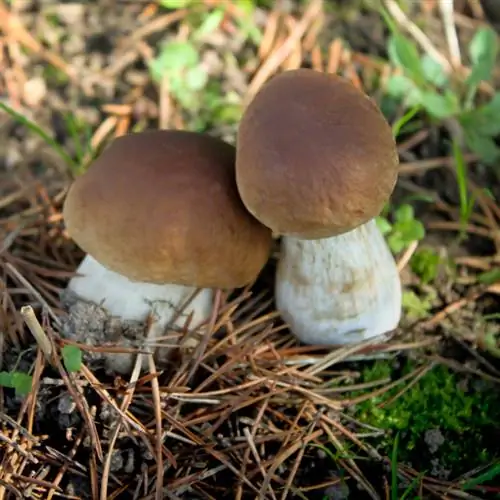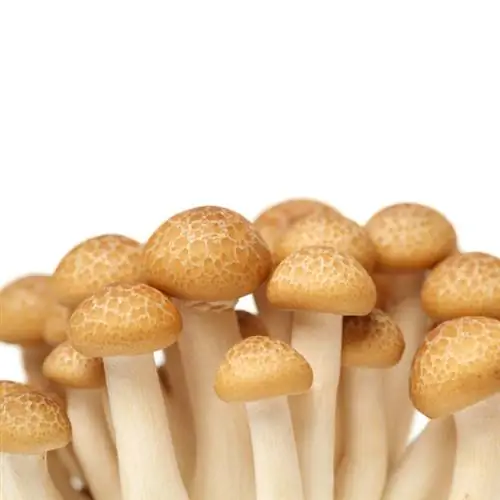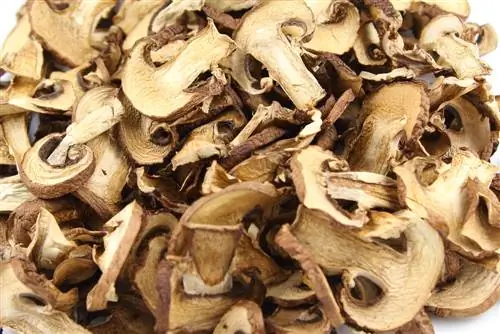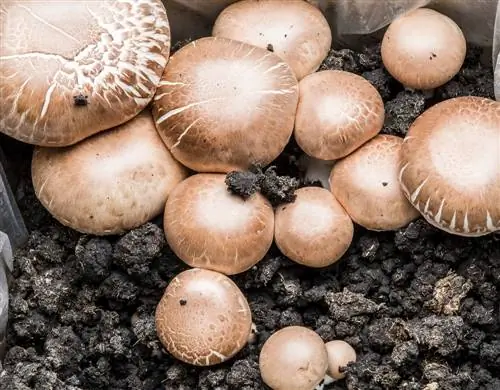- Author admin [email protected].
- Public 2023-12-16 16:46.
- Last modified 2025-01-23 11:19.
Mushrooms are neither plants nor animals. Scientifically, they represent their own order “Funga”. However, their reproduction is not fundamentally different from the reproduction of various plant species, as they spread their spores through the air like tiny seeds.
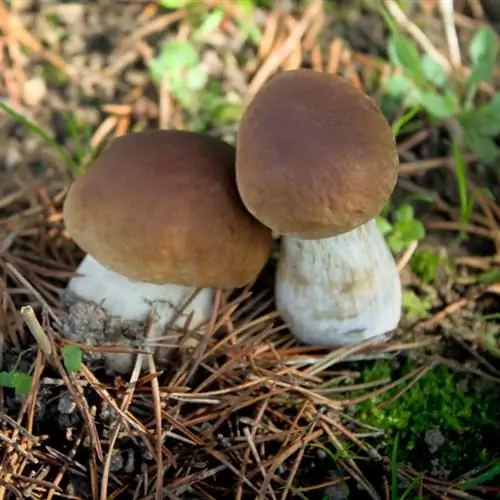
How do mushrooms multiply?
Fungi reproduce by spreading spores, which are carried through the air like tiny seeds. They form underground networks called mycelia, which absorb nutrients and water and form fruiting bodies on the surface.
The spread of the spores
Basically, the spread of fungi works like a plant with tiny seeds. If you want to grow mushrooms, you have to place spores of the desired mushroom species in a suitable place. Sometimes this also works with unwashed mushroom residues that still have spores attached. However, the result is better with professionally made spore sticks (€37.00 on Amazon) from specialist retailers.
The mycelium underground
The edible mushrooms we collect for consumption do not actually represent the whole mushroom. Rather, they are just the fruiting bodies of a plant, which runs through the ground as a mycelium like a widely branched root system. This means that even without the direct spread of spores, additional fungi can appear on the surface if there is still intact fungal mycelium in the soil. When harvesting, mushrooms should never be pulled out of the ground with the mycelium. With a bit of luck, a new mushroom can grow in the same place in the same season.
The honey fungus as a mushroom with underground reproduction
An impressive example of the reproduction of mushrooms through the underground mycelium is the honey mushroom. This mushroom, which is also used as an edible mushroom, is very common in some areas of the USA. In the US state of Orgeon, a giant chimney mushroom is considered the largest living creature on earth, measuring around 1,200 football fields. The underground network of this giant sucks nutrients and water from conifers and forms honey-yellow fruiting bodies on the surface.
When collecting, think about the reproduction of mushrooms
Mushroom pickers should always think about the future. That's why you should always leave enough mushrooms in the forest, even in years when there are fewer mushrooms, so that they can spread their species with their spores. In any case, larger mushroom specimens are usually no longer tasty or are already rotten on the inside of their stem.
Tip
If fungi are introduced into the grass cover of the home garden through woody soil or turf, the only thing that can stop them from multiplying is often a change in the soil conditions:
- Change of the pH value by adding lime
- Drainage of waterlogged soil
- Aeration of the soil by scarifying
If these fungi remain uncontrolled, the characteristic witch rings often quickly form in the soil through spore reproduction.

